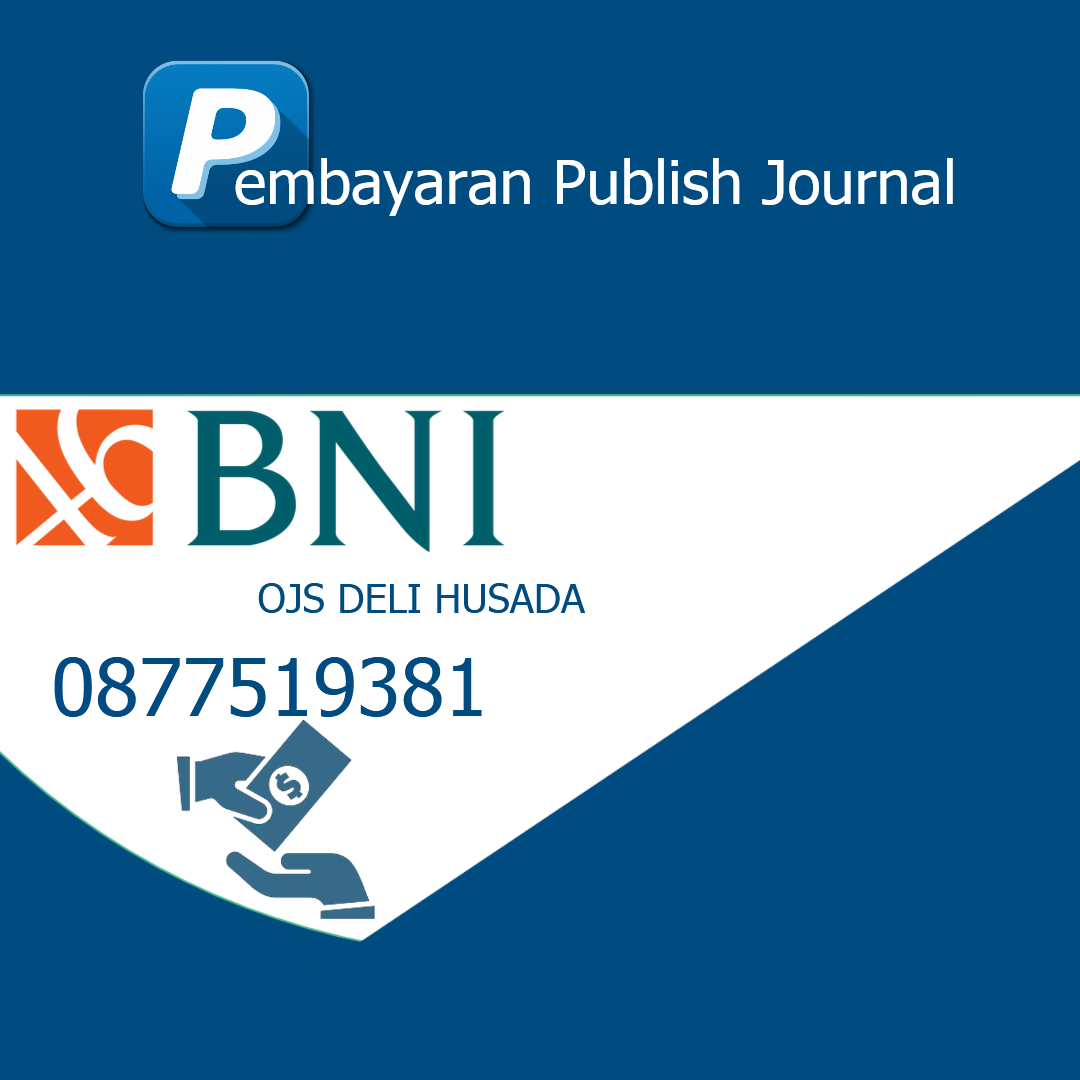EVALUASI BUDAYA PENERAPAN K3 DENGAN KEPUASANPASIEN DALAM PENCEGAHAN COVID-19 DI PUSKESMAS BATU ANAM TAHUN 2022
Abstract
Safety is a form of practice that refers to our ability to eliminate or reduce the likelihood of a hazardous event occurring, which can interfere with our physical, mental and organizational functioning. Covid-19 is a new type of virus that has not previously been identified in humans. Covid-19 has started to become an epidemic in Indonesia since early March until now in August 2021. One of the efforts to reduce the possibility of a dangerous event, namely Covid-19, is to establish a safety culture. Culture will shape specific behaviors. This study aims to determine the Cultural Evaluation of the Implementation of K3 with Covid-19 Prevention Readiness at the Batu Anam 2022. The design of this study used an observational study with a cross-sectional approach where the population in this study were all patients who visited Batu Anam who met the requirements. The number of samples in this study was 96 people using consecutive sampling technique. Based on the results of the study, it was found that there was a relationship between safety values (p-value 0.003), leadership in safety (p-value 0.002), safety accountability (p-value 0.00), integrated safety (p-value 0.03), safety as a driving force (p-value 0.006) with patient satisfaction. Based on multivariate analysis, it was found that the most dominant variable related to patient satisfaction is the safety value with a p-value of 0.000 where the Exp (B) value is 12.068 where a good safety value 12 times will affect a person to feel satisfaction compared to a bad safety value. It is hoped that health workers will improve the application of safety values such as conducting morning briefings or coffee mornings, team sharing between the head of the public health and staff with the aim of strengthening team performance, building trust and also being useful for communicating about problems that exist in the public health.
References
Biro, D. I., Bp, P., Tenaga, B., & Nasional, N. (2019). 1 ANALISIS BUDAYA KESELAMATAN KERJA PEGAWAI DI BIRO PERENCANAAN (BP) – BADAN TENAGA NUKLIR NASIONAL (BATAN) Sri Agustini, Budi Kaliwanto. XVI(2), 1–9.
Cooper, D., (2002), Safety Culture - A Model for Understanding & Quantifying Difficult Concept, Professional Safety, 47(6), 3036.
D, M. D. C. P. (2000). Towards a model of safety culture. 36, 111–136.
Departemen Kesehatan RI. Undang-Undang Republik Indonesia Nomor 36 Tahun 2009 Tentang Kesehatan. Jakarta: Kementrian Kesehatan RI: 2009.
Griffith (1987). Kepuasan pasien tentang pelayanan Rumah Sakit. Jakarta. Guna Jaya
Iskandar, Implemetasi Teori Hierarki Kebutuhan Abraham Maslow Terhadap Peningkatan Kinerja Pustakawan, Jurnal Ilmu Perpustakaan, Informasi dan Kearsipan Khizanah Al-Hikmah, Vol.1 No.1 Tahun 2016.
Jerome, Nyameh, Application of The Maslow’s Hierarchy of Need Theory; Impacts And Implications on Organizational Culture, Human Resource and Employee’s Performance, International Journal of Business and Management Invention, Volume 2 Issue 3 March. 2013, diakses dari https://pdfs.semanticscholar.org/b0bc/c8ca45193eaf700350a8ac2ddfc 09a093be8.pdf.
Kartikasari, Ratih Dwi dan Bambang Swasto, Pengaruh Keselamatan dan Kesehatan Kerja Karyawan Terhadap Kinerja Karyawan (Studi Pada Karyawan Bagian Produksi PT. Surya Asbes Cement Group Malang), Jurnal Administrasi Bisnis Vol. 44 No.1 Maret 2017, https://media.neliti.com/media/publications/87770-ID- pengaruhkeselamatan-dan-kesehatan-kerja.pdf.
Kurniasih, D., & Rachmadita, R. N. (2021). Pengukuran Budaya K3 Pada Tingkat Non Manajerial Dengan Menggunakan Cooper’S Reciprocal Safety Culture Model Di Pt. X. J@Ti Undip : Jurnal Teknik Industri, 8(2), 83–88. https://doi.org/10.12777/jati.8.2.83-88.
Kurniawidjaya, L, Meily, 2010, Teori dan Aplikasi Kesehatan Kerja, Penerbit Universitas Indonesia, Jakarta.
Lee, A. (2020). Wuhan novel coronavirus ( COVID-19 ): why global control is challenging ? Public Health, 179, A1–A2. https://doi.org/10.1016/j.puhe.2020.02.001
Nopiyanti, E., Tower, C., & Muttaqin, A. (2020). Hubungan Iklim Keselamatan Dengan Budaya K3. 10(1).
Mohammad Y, D., Lisbeth, M., & Lucky O.H, D. (2014). Pelaksanaan Program Kesehatan Dan Keselamatan Kerja Serta Pemberian Insentif Terhadap Kinerja Karyawan Ud. Sinar Sakti Malalayang. Jurnal Riset Ekonomi, Manajemen, Bisnis Dan Akuntansi, 2(2), 1429–1439. https://ejournal.unsrat.ac.id.
Muninjaya. 2011. Manajemen Kesehatan. Jakarta: EGC.
Purwaningsih, R., Handayani, N. U., & Miranda, N. (2019). Penilaian Budaya Keselamatan Dengan Metode Scart (Safety Culture Assessment Review Team) Pada Badan Pengelola Instalasi Nuklir. J@ti Undip : Jurnal Teknik Industri, 14(1), 27. https://doi.org/10.14710/jati.14.1.27-32.
Prasetya, Oce, Budaya Keselamatan Dalam Upaya Mencapai “Zero Accident”, Jurnal Manajemen Bisnis Transpormasi dan Logistik Vol.2 No.1 Tah un 2015, diakses dari http://library.stmttrisakti.ac.id/jurnal/index.php/JMBTL/article/view/4 5/pdf_29.
Ramadhan, D. T., Astuti, R. D., & Irwan, I. (2021). Uji kelayakan desain kusioner budaya keselamatan ECAST (european commercial aviation safety team). Jurnal Manajemen Dan Teknik Industri - Produksi, XXI(2), 101–110. https://doi.org/10.350587/Matrik.
Rachmawati, E. (2011). Model Pengukuran Budaya Keselamatan Pasien Di Rs Muhammadiyah-‘Aisyiyah Tahun 2011. Fakultas Ilmu-Ilmu Kesehatan Universitas Muhammadiyah Prof. DR. Hamka, 11–34.
Robbins, Stephen. 2003. Perilaku Organisasi, Jilid Kedua, Cetakan Pertama, Prentice Hall Inc.
Syafrudin, dkk. 2011. Manajemen Mutu Pelayanan Kesehatan Untuk Bidan. Jakarta: Trans Info Medika.
Supranto, J. 2002. Pengukuran Tingkat Kepuasan Pelanggan Untuk Menaikkan Pangsa Pasar. Jakarta: PT.Rhineka Cipta
Pangkey, Febyana, dkk, Penerapan Sistem Manajemen Keselamatan dan Kesehatan Kerja (SMK3) Pada Proyek Konstruksi di Indonesia, Jurnal Ilmiah Media Engineering, Vol. 2, No.2 Tahun 2015, diakses dari https://media.neliti.com/media/publications/97452-ID-penerapansistem- manajemen-keselamatan-d.pdf.
Winarsunu, T., 2008, Psikologi Keselamatan Kerja, Jakarta: Penerbit Universitas Muhammadiyah Malang.
Widiatmoko, P. (2014). konsep dasar K3. SCRIBD.









